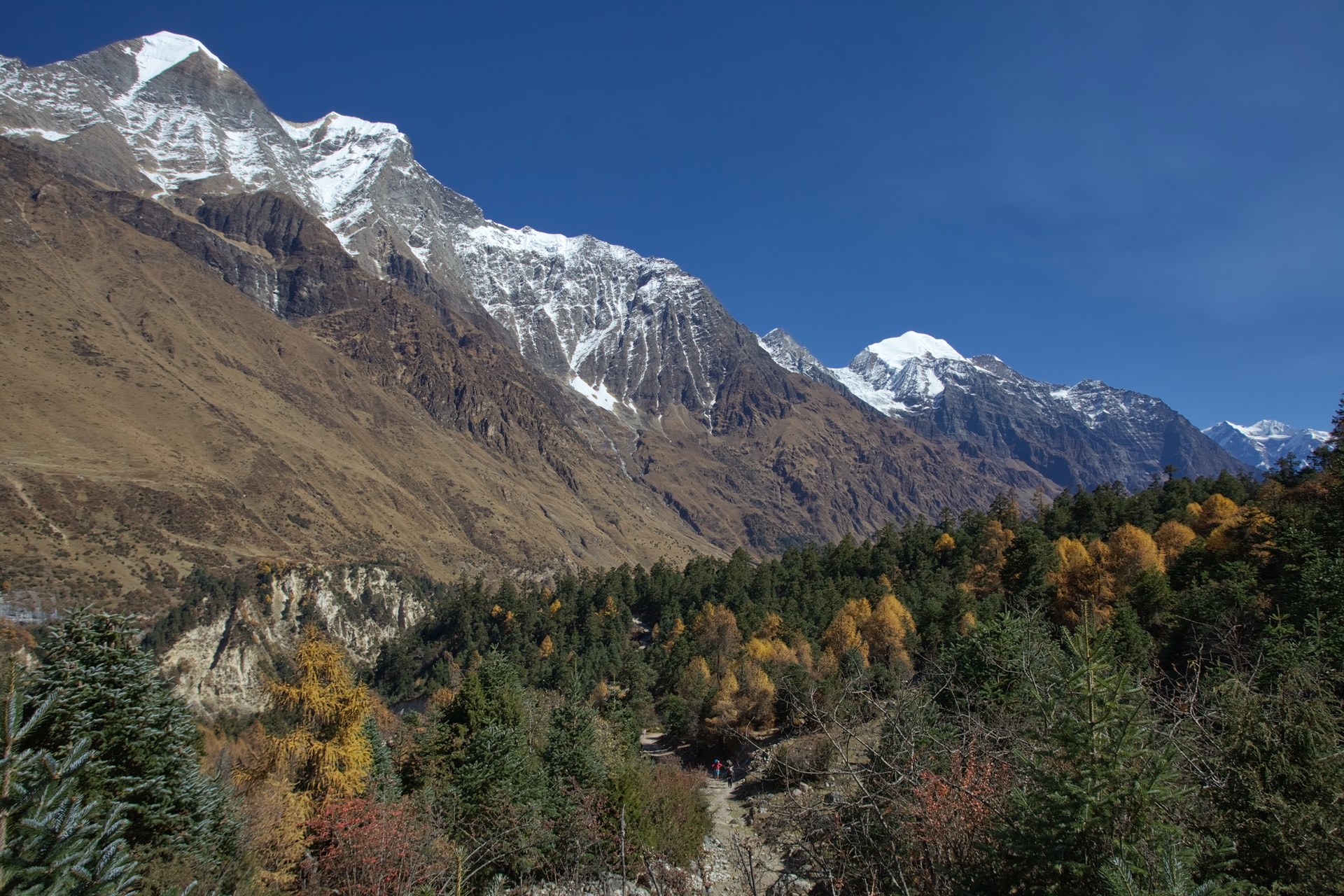
Manaslu Circuit Trek Difficulty
The Manaslu Circuit Trek is a good choice if you’re seeking something adventurous and unique in your trek. The climb to Manaslu, the eighth-highest peak in the world, includes all the elements of a traditional Nepali trek. Manaslu, at 8163 meters above sea level, is the eighth-highest peak in the world. It is situated in the Mansiri Himal in the western region of Nepal. From the Sanskrit word man, which denotes “intellect” or “soul,” comes the name Manaslu. Similarly, in this article, we will be talking about all the Manaslu Circuit Trek Difficulty.
Manaslu, which was climbed on May 9, 1956, by a Japanese team led by Toshio Imanishi and Gyalzen Norbu, also means “mountain of the spirit.” It has a range of trekking opportunities and is the tallest peak in the Gorkha district. About 40 miles (64 km) east of Annapurna is this summit.
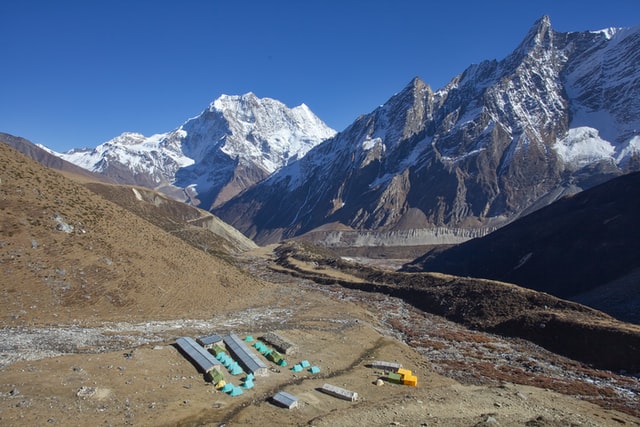
Manaslu Circuit Trek
The Manaslu circuit hike provides you with everything from close contacts with locals and their ancient culture to breathtaking scenery. In addition, this journey provides breathtaking vistas of the Annapurna region’s greatest mountains. The most spectacular flora and animals can also be seen, in addition to the majestic sight of snow-capped mountains and high glacier lakes. Traditional Tamang and Sherpa communities are among the many Nepalese cultural heritage sites that the circuit walk travels through.
You may thus experience traditional Nepalese culture and historical landmarks through these treks. This walk is the ideal substitute for the nearby Annapurna Circuit because it lies in the shadow of Kanchanjunga, the third-highest mountain in the world. In addition, it features a beautiful Himalayan landscape, a thriving wildlife population, and accommodations in tea houses. Although this trek is a beautiful trek one must consider all the Manaslu Circuit Trek Difficulty.
As you move northward through the Buri Gandaki Valley, you will arrive at steaming Machhi Khola, where the climb to spectacular Manaslu’s circuit begins. The walk occasionally follows the river across the valley, but it mostly involves ascents up the steep, forested gorge. To get to the highest point, the spectacular Larkya La at 5,106m/16,752ft, you must ascend hard from Ghap.
With time to see the charming Tibetan settlements of Sama Gaon and Samdo, the path up the pass offers great acclimatization and a wealth of cultural interest. You can get a wonderful sense of accomplishment and breath-taking vistas of the massive peaks of the broader Himalayas after crossing the Larkya La. Before departing for Kathmandu, you finally descend to Dharapani and say goodbye to the residents.
Highlights Of Manaslu Circuit Trek
- At an elevation of 8163 meters, the world’s highest mountain is reached by a circuitous route.
- Experience the Manaslu region’s lush vegetation, rivers, and forests for yourself.
- sites that are parts of Nepal’s cultural heritage, such as traditional Tamang and Sherpa villages.
- Tibetan-influenced monasteries and culture.
- The highest point of the journey is Larkya La Pass (5167 meters).
- Manaslu, Cheo Himal, Himlung Himal, Nemjung, Gyaji Kang, Kang Guru, and Annapurna II are just a few of the world’s tallest peaks that may be seen in this breathtaking panorama.
- Numerous animals, including the Tahr (mountain goat), Agali (blue sheep), Pika (highest living mammal), Himalayan marmots, and, if you’re lucky, the Snow Leopard.
How Difficult Is Manaslu Circuit Trek?
The Manaslu Trek is one of the more difficult treks in Nepal. Adventurers who complete the Manaslu circuit Trek are rewarded with intense alpine thrills. It’s a unique, far-flung excursion with potentially challenging terrain. But if you have enough zeal, you can easily overcome the weather and the difficult paths. Although this trek is a beautiful trek one must consider all the Manaslu Circuit Trek Difficulty.
Difficulty Concerning Distance And Destinations
This walk is extremely diversified, with terrain ranging from its lowest point of 228 meters to 8,163 meters of Mt. Manaslu, the eighth-highest mountain in the world. You will walk for 10 to 12 days, covering an average distance of 15 to 20 km each day, for a total of roughly 17 days, if you cover the 177 kilometers. The Budhi Gandaki Gorge is treacherously steep, making the first several days of the trial difficult. You must also traverse suspension bridges above the Budhi Gandaki River and walk up and down slopes, sometimes on winding pathways. Crossing the Larkya La Pass at a height of 5,213 m is the most difficult.
You must be emotionally and physically prepared for the rugged, uneven terrain that could make you tired.
However, a remote journey does not necessarily require exceptional fitness. With no physical issues, you might even choose to go on this walk with a modest degree of fitness.
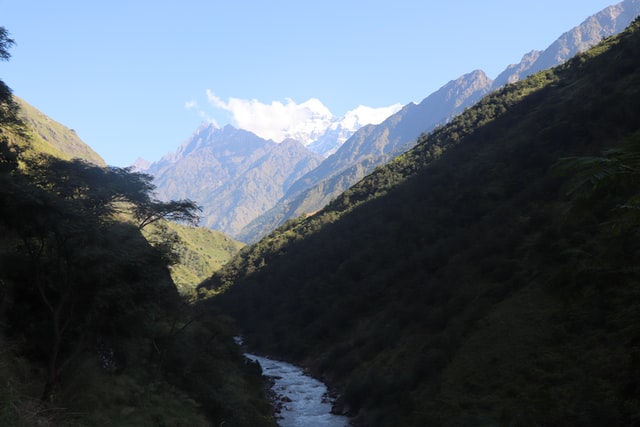
Weather
The Himalayan region experiences erratic weather. The trek’s difficulty is significantly influenced by the weather. In the Himalayan regions, it may rain heavily, be chilly outside, be hot outside, or be sunny and burning. During the walk, you must be prepared for any conceivable type of weather. Although the nights are typically below freezing, the days are typically warm and dry. As a result, bring a good sleeping bag and warm clothing. Due to the significant snowfall throughout the winter, the Larkya La Pass is always blocked. Therefore, this might also add to your Manaslu Circuit Trek Difficulty.
Despite being a good time of year for the trek, inclement weather can occur whenever you’re at a higher altitude. As a result, one must take the weather seriously because it affects whether or not the expedition can be completed.
Altitude Sickness
Any altitude over 2500 meters can result in acute mountain sickness. The risk of altitude sickness might increase with an increase in altitude. Manaslu Circuit Trek begins at a lower elevation and climbs to the 5213m Larkya La pass. Altitude sickness is a disorder brought on by the low oxygen level experienced as you rise. Headache, intense exhaustion, and loss of appetite are some of the early signs of altitude sickness. Additionally, some persons experience breathlessness while at rest.
When minor symptoms start to appear, you should continue to be at that elevation until they have subsided. You will feel better and be able to resume your walk after the symptoms have subsided in one or two days. However, it is vital to descend if the symptoms worsen. AMS symptoms that get worse include being more exhausted, having a terrible headache, throwing up, and losing coordination. €Therefore, this might also add to your Manaslu Circuit Trek Difficulty.
Difficulty Concerning Luxuries
The Manaslu Circuit journey doesn’t have a problem finding lodging because the paths there are frequently deserted or sparsely traveled. The tea houses and lodges, however, are not as opulent as those in upscale hotels and eateries. The villagers themselves maintain the teahouse and lodges here. Therefore, you could experience the usual way of life of Nepalese people who live in rural or remote locations throughout your Trek to Manaslu. Additionally, there are no ATM services available here if you need to purchase while carrying a handbag of any kind. You must also make sure you have extra hand ashes with you. Therefore, this might also add to your Manaslu Circuit Trek Difficulty.
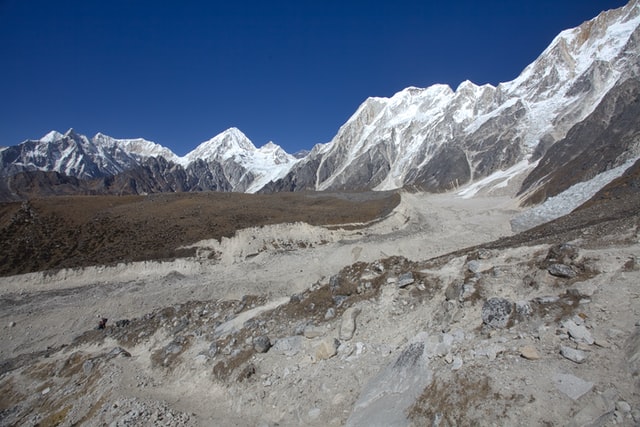
The Necessity To Travel With A Guide
In contrast to other hiking areas, Manaslu is a challenging one. As a result, you should immediately abandon the thought of hiking without a guide if you are unfamiliar with the Nepalese Himalayas. Since the Nepali government requires international hikers to have a permit, In addition, in the restricted region, the trekkers must be accompanied by a registered guide. It is impossible to trek without a guide in Manaslu because it is one of the prohibited regions.
Altitude Sickness In Manaslu Circuit Trek
Trekking in the Himalayas requires caution due to the high incidence of altitude sickness there. Acute mountain sickness is another name for altitude sickness. In general, it can happen when people climb too quickly in normal conditions at elevations above 2500 m without any acclimatization. As you ascend in altitude, the oxygen content drops, making breathing more challenging. Therefore, this might also add to your Manaslu Circuit Trek Difficulty.
At a height of 700 meters, Soti Khola is the starting point for the Manaslu Circuit Trek. You will gain an average of 400 meters in elevation each day starting from Soti Khola. Your body will initially be able to adapt to the 400m elevation gain, but after one week, you will reach Sama Gaun at 3530m. Consequently, you might get minor symptoms there at Sama Gaun. It is therefore best to spend the day acclimatizing here at Sama Gaun at a height of 3000 meters. Although it rarely happens before 4000 meters, altitude sickness can sometimes manifest itself much earlier. Ignoring it could result in death because it is a dangerous ailment.
Most of the top treks in Nepal are located at the highest altitudes. Both the Manaslu and the majority of the high Himalayas’ base camps are located over 5000 meters. The Larka pass, at 5213 meters, is the trek’s highest point. As a result, it’s crucial to be aware of altitude sickness before embarking on a Manaslu Circuit Trek. To avoid such issues, you need to be both physically and psychologically fit.
Similar Packages you might like
The Major Symptoms Of Altitude Sickness
- Initial Symptoms
- Feeling laziness
- Periodic breathing.
- Diarrhea
- Periods of sleeplessness
- Feeling extra tiredness
- Occasional loss of appetite.
Advanced Symptoms
- Hard to breath
- Frequently tired
- Dry Raspy cough
- Not fell asleep
- A headache and vomiting
- Racing heartbeat
- Exhaustion
- Nausea
- Weakness
Serious Symptoms
- Unconsciousness
- Imaginal delusions (seeing things that are not real)
- Changes in one’s capacity for thought
- Alterations to typical behavior
- Chest tightness with a prolonged cough that produces white, watery, or foamy liquid.
- Headache that becomes worse and vomiting
- Hand, face, and stomach swelling
- Decreased urine production and a little amount of blood in a cough.
- Having a stumbling stride while walking
Manaslu Circuit Trek Difficulty
Distance Of The Trek
The Manaslu Circuit Trek is located in the west-central region of the Gorkha district, in the northern Himalayan range. The terrain varies from its lowest point of 228 meters to 8,163 meters of Mt. Manaslu, the eighth-highest mountain in the world. The Manaslu Circuit Trek is roughly 177 kilometers long, and you’ll trek for 10 to 12 days on average, covering about 15 to 20 kilometers each day, which can be very taxing on your body.
Here Are Some Of The Difficulties Of The Manaslu Circuit Trek.
Altitude sickness may be the main issue in this situation given that the base camp of Manaslu is located at a height of 5213m. Over 2500m is when altitude sickness begins. Consequently, it is one of the challenges of the Manaslu Circuit Trek.
Remote pathways should also be taken into account when walking in the Manaslu area. The trails are uneven, dusty, and have a variety of ascents and descents. It could be challenging for anyone with poor physical fitness and stamina.
In the Himalayan region, the weather and temperature are constantly erratic. At a greater altitude, bad weather can occur at any time. Because in some seasons the evening temperature might fall below freezing. Therefore, this might also add to your Manaslu Circuit Trek Difficulty.
The accommodation issue comes up during the Manaslu circuit hike. The number of tea establishments decreases as we get to higher altitudes. Pre-booking is therefore required.
Best Season For Manaslu Circuit Trek
In Spring
Beginning in March and lasting until May is spring. One of the busiest times of the year in Nepal for trekking and adventure. Springtime is the ideal season to go hiking because of the beautiful, blue skies and mild to warm temperatures. The hikers will be blessed with a variety of vibrant flowers and blooming rhododendrons during the flower-filled spring season. Springtime weather is pleasant; it is neither too hot nor too cold. The weather begins to warm up in April, and rhododendrons are in blossom all around the hills.
The ideal period of the spring is early to mid-April. May is also a busy time of year since the lower region gets very hot and the higher region occasionally becomes hazy.
Compared to fall, spring is thought to be the second-best season because it is the least crowded. Because of this, spring is the greatest time for individuals who want a peaceful, lovely, and wonderful vacation.
In Monsoon
Beautiful flowers and lush, green woodlands abound throughout the monsoon season. Monsoon rain can make your walk more challenging even though it is a wonderful time of year. Trekkers may experience difficulties with leeches, dangerous terrain, slick routes, and ominous clouds that may obscure the breathtaking Himalayan views during the monsoon season.
In Nepal, the monsoon season starts in the middle of June and lasts through August. However, if you don’t mind the rain, you might be able to see the beautiful mountains in the early morning. Heavy showers that come in July could result in days of nonstop rain. The month of July is a landslide season. These days, the monsoon season’s weather can be a little unexpected. Therefore, this might also add to your Manaslu Circuit Trek Difficulty.
Despite all of this, you still get to experience nature, since you are surrounded by verdant green fields and rhododendrons in blossom. Rain may provide certain challenges, but the surroundings following rain are worth bragging about. It has the clearest perspective of the entire scene and is a vibrant green.
In Autumn
For the hike to Manaslu Circuit, autumn is ideal. Despite being the busiest, it is still less congested than the Everest Base Camp Trek or the Annapurna Base Camp Trek. Autumn is from September to November. However, the first two weeks of September may bring light rain for hikers. Therefore, choose October and November if you want to avoid the rain as much as you can. The optimum months for the walk to the Himalayas are October and November.
Less or no rain is falling, and the surroundings are beautiful. With the environment being farmland, the Himalayas can be seen in all their clarity. Even though it begins to get a little cool in late November, November is still the nicest month. In general, fall days are warmer than summer nights, but vice versa.
In Winter
The mountains are most beautiful in the winter when the sky is a brilliant blue. In Nepal, winter lasts from December to February. At lower elevations, the winter days are chilly, while at higher altitudes, it is below freezing. At 5213 meters above sea level, where Manaslu’s base camp is located, the wintertime weather is bitterly cold. Therefore, reaching the Manaslu circuit trek is not impossible if necessary measures and preparations are taken. Therefore, this might also add to your Manaslu Circuit Trek Difficulty. Trekkers need to be well-equipped with the right clothing and equipment. Additionally, finding a place to stay the night during the winter months may be challenging because of the cold and snowy conditions. One ought to reserve lodging earlier if one wants to prevent these situations.
You should bring extra clothing and camping supplies because Larkya La Pass can occasionally become impassable owing to ice and snowstorms. It is not a good idea to choose this journey during the winter if it is your first one. It is quite unfriendly and you must travel carefully due to the erratic and severely chilly weather.
Why Manaslu Circuit Trek
Without a doubt, the Manaslu Circuit Trek is among the most rewarding treks in Nepal. All of your efforts will be rewarded by the area’s abundant flora and fauna, wildlife, magnificent landscapes, and traditional Hindu and Buddhist communities. There are several advantages to picking this trekking route for your upcoming vacation.
Himalayan Scenario
Himalchuli (7,893m), Manaslu (8163m), Shringi (7,187m), Ganesh Himal, Ngadi Chuli (7,879m), Himlung Himal (7,125m), Cheo Himal (6,820m), Kang Guru (6,981m), Annapurna II (7,939m), Larkya Peak (6250m), and Manaslu are just a few of the magnificent Himalaya (8163m).
Trail Rich In Biodiversity
A variety of rare and endangered creatures can find a rich and diverse habitat in the Manaslu region. The elusive Snow Leopard, Red pandas, Himalayan Black Bear, Serow, Himalayan Tahr, Ghoral, Barking Deer, Wild Boar, etc. will be visible as you go through a conservation area. Lower elevations are home to the lovely national bird of Nepal, the danfe. The Manaslu region, therefore, allows you to view the natural diversity, vegetation, and endangered animals in addition to trekking.
Less Crowded And Peaceful Trail
Go on this trek to Manaslu if you want to go in a calm environment without a lot of people. The Manaslu Circuit Trek is less frequented than other well-known treks in Nepal because it is farther away, and frequently the trail is quiet. When compared to other well-traveled trails like Everest and Annapurna, the Manaslu circuit has a fairly low density of trekkers. The king may be enjoyed solitude, and the filly has time to explore the outside.
Unique Culture Experience
The Manaslu circuit trek’s distinctive culture and experiences are yet another distinguishing quality. The Manaslu region shares Tibetan culture and traditions with Tibet. People who migrated from Tibet to Nepal in the distant past now reside in Manaslu. The magnificent Manaslu region’s settlement evokes Tibetan culture. Manaslu’s way of life has not been affected by any form of development or modernization. As you stroll by the settlements, the distinctiveness of the cultures is plain to see. Similar to this, you will observe people dressed in their traditional garb, and Buddhism is the predominant religion. On the way, you’ll travel by several stupas, monasteries, gompas, prayer wheels, and Chortens.
Larkya La Pass
At about 5125 meters, the Larkya La Pass is a challenging pass on the Manaslu trek route. The Manaslu Trekkers will pass via the longest pass throughout their journey. The Manaslu trek’s highest point, Larkya La pass, is unquestionably an ideal vantage point along the way. You will have amazing views of the magnificent Himalayas from the pass. After you see the glowing Himalayas in front of your eyes, it is extremely thrilling but also satisfying.
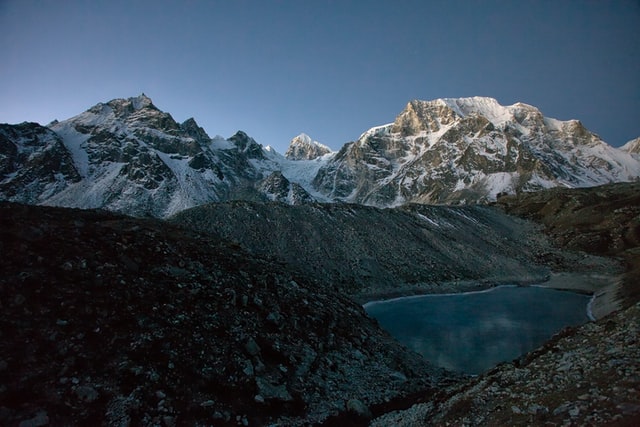
Tips For Manaslu Circuit Trek
- Always keep hydrated by drinking adequate water. The best defense against acute mountain sickness is to keep your body hydrated.
- Always bring and drink filtered water.
- Be cautious of raw food. Eat a balanced diet that includes vegetarianism unless fresh meat is readily available.
- Carry some high-calorie snacks that will provide you with more energy and stamina during a lengthy Trek, such as protein bars, raisins, and peanuts.
- Packing the appropriate equipment for a high-altitude journey will lessen its challenges.
- Avoid drinking and smoking because they both increase the risk of altitude sickness.
- Take any drugs you’re taking along with you in a first aid kit. Only bring what you’re taking with you. Never carry something that you are unsure of.
- Before ingesting any medications, get medical advice.
- Start early because it is usually advisable to do so in the Himalayas. In the Himalayan region, inclement weather might occur at any time. Starting earlier is therefore preferable.
- Acclimatization is crucial since it protects against altitude sickness. It is advised that you move about and stay active.
- As your body adjusts to the changing altitude, it’s common to experience a mild headache or fever. Do not worry about yourself excessively.
- Ensure that you have obtained all necessary permits for the Manaslu Trek.
One of the challenging treks in Nepal’s Himalayan region is the Manaslu Circuit Trek. The Manaslu circuit trek is exciting and adventurous thanks to the beautiful views of Mt. Himalchuli, Mt. Ganesh Himal, Mt. Manaslu itself, and other mountains. This trek is genuinely intended for individuals who are enthusiastic about exploring Nepal through travel and trekking.
